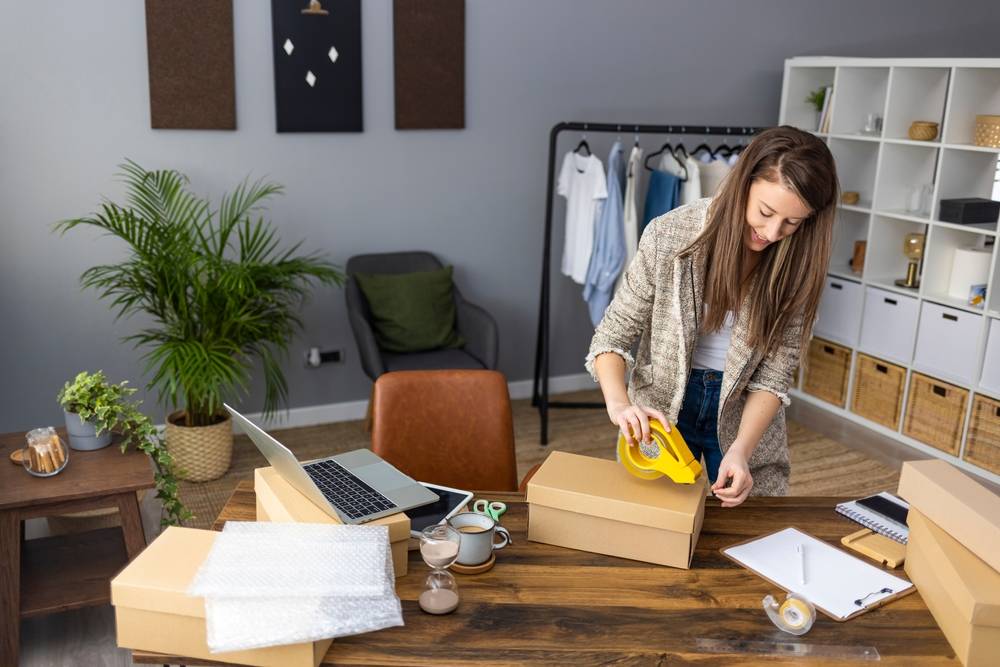If any business wants to exist, they need to make sure to properly merchandise their products. While this might seem obvious, it’s oddly very difficult sometimes. This is especially so if you’re a small business and are trying to stand out from the crowd.
There are countless ways to merchandise products, but the right ones will depend on a few things. This ranges from how much competition you have to your brand’s personality. These elements might not seem that important, but they’re critical to understand if you want to be successful.
If you’re interested in learning more, keep reading. Below, you’ll discover some tips you can use for great product merchandising.

Why It’s Important to Advertise Products
Taking the time to market your products is essential to brand growth. Not only does it help you reach your target audience, but it builds trust and authority. The more you reach out to people, the more likely you’ll intrigue them.
It’s also crucial to consistently advertise your goods because it keeps you level with the competition. If you only occasionally advertise things, you’re going to give your competitors a great advantage.
Apart from this, it keeps customers in the know. You can alert them to unique deals and new products that might be available.
7 Steps to Merchandise Your Products
1. Analyze Your Competition
The first thing you’ll want to do is research competitors. This will give you a better idea of how they’re advertising products to customers.
To begin with, observe how they’re marketing themselves. Do they display their brand name everywhere? Are they popular for specific products? Consider also the type of competitor they are. There are three main types to look for: direct, secondary, and substitute.
Direct
This is your main competitor. They are who compete for your same target group with the same products.
Secondary
These competitors aren’t your main ones, but they’re pretty close. They’re usually in the same industry as you, but tend to sell slightly different products. Some might also try to cater to a different target audience.
Substitute
A substitute competitor doesn’t sell the same products. However, they do market to customers in your geographic location. So while not a major concern, they could draw a handful of people away from you.
Once you compile this information, you can write a detailed analysis about them. Write down where they’re succeeding and some weaknesses you notice. This will give you a better idea of how to compete with them.
2. Build Brand Recognition
If you want people to remember you, design a good brand theme. You want something that instantly reflects who you are. The theme should also be good enough to stick in someone’s mind. This way, when they see that specific theme or design, they instantly think of you.
As you continue to merchandise your products, customers will slowly start to recognize you more. This can help with retaining them and expanding your base. It could also assist with product pricing. This is because they find value in your items and are willing to pay more.
When you grow brand recognition, you’ll gain a loyal base. You can then slightly boost your prices. More people will be likely to buy from you regardless because they trust your brand.
3. Go Visual
A great way to instantly attract people to your products is through brand design.
There are a few things that will help with this. To start, consider your target audience. Build the colors and logo around them. If it’s a younger demographic, you might need to do something bold and flashy.
But make sure that the design fully encompasses who you are as a company. You don’t want to make something vivid and loud if your brand sells calm and simple products.
Also, think of an unforgettable logo or slogan to include. You can then place this on your products. Often, if you build value, these visual cues on retail products will make them sought-after. You can see this at work with many high-end brands. Sometimes people buy things from them simply to show off the brand logo.
4. Create an Experience
Many customers enjoy it when brands make buying something fun or unique. This could be through creative packaging to a beautifully decorated shop.
If you’re an online retailer, look into ways to make your products memorable to those who purchase them. This could be with fancy wrapping paper, a product sample, or a handwritten note.
For those with a physical store, make it a place people don’t want to leave. Try to appeal to all five senses and design the layout and shelves so that they draw customers in.
You might also curate displays. Many people enjoy looking at these for inspiration. You can set one around a particular product. For instance, if you want to promote perfume, build a display around it that shows off its scent notes. This helps people better envision what the item is and how it could make them feel.
5. Watch Where You Place Products
Another thing to remember is product placement. If you don’t carefully brainstorm this, certain things can get overlooked. This could cause them to not sell well.
Ideally, place popular items in a noticeable spot. It’s often recommended that you put them in the back, so people have to actually walk through the entire store. However, if you’re a small business and know that’s what your profit mainly comes from, put them front and center.
To further draw attention, place flashy signs around your top products. This will instantly catch someone’s eye and direct their gaze to them.
6. Promote Offers and Discounts
As people explore your shop virtually or in person, be sure to point out offers and discounts. This can direct them to certain items they might not have thought about. As they see these ads, they’ll likely check them out.
Doing this can point people to items that might not be bought often. It also highlights trendy ones.
Be sure though that the message is clear and direct. If a customer tries to buy something but finds that they misunderstood the deal, they might end up not purchasing it in the end.
7. Have Superb Customer Service
This might not seem like it would have much to do with promoting a product, but it has an incredible impact.
Negative employees or those who don’t know much about your products can put off shoppers. It makes things unpleasant and could concern them if they can’t get basic answers.
To prevent this, make sure to hire fantastic employees and train them to give exceptional service. This includes daily talks to update them on company issues. You might also require them to attend training sessions every few months.
However, one of the top ways to generate good customer service is to show appreciation to your employees. If they know their work is acknowledged, it could encourage them to be more positive about your brand. This in return could help them promote your products better.
Promoting your products can be overwhelming, especially if you’re in a crowded industry. By using these tips though, you can better merchandise them and show why customers should choose you.
For more information, please refer to the following pages:
- How to Make a Brand That Customers Recognize
- Tips for Incorporating Your Brand Into Your Products
- Guide for Making Your Products Stand Out
- How to Optimize Your Store Layout
- What Is the Business Strategy Behind a Pop-up Store?
- Why Is Retail Merchandising Important?
- What Is a Merchandising Job?
- How to Put the Customer First in Your Products
- 10 Reasons an Optimized Store Layout Leads to More Sales
- How to Organize Your Retail Displays
- How to Boost In-Store Brand Engagement
